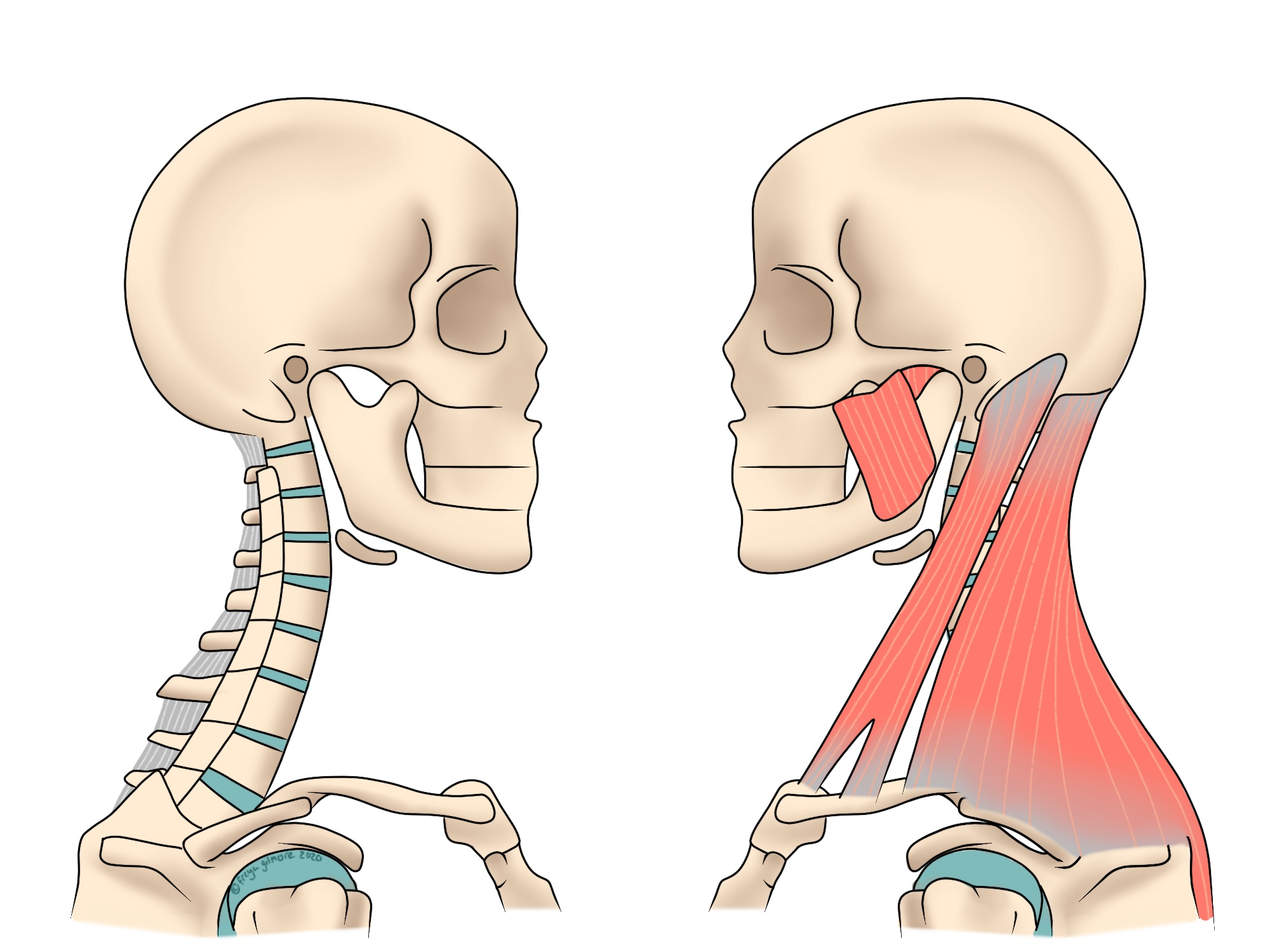30 September 2020
Neck Pain

Neck pain is one of the most common complaints seen in clinic. Just like lower back pain, there are a number of different structures in the neck that can cause pain.
Problems with discs in the neck
Between every vertebra from the neck to the lower back, there is a disc. Discs have two layers: a tough, fibrous outer layer, and a softer middle. They are firmly anchored to the bones above and below them. The term “slipped disc” is a misnomer, because this anchorage means the disc itself is never out of place. However, the outer layer can be injured and the inner layer can push against it, causing a bulge.
If a disc bulges, it can push backwards and irritate a passing nerve. This typically means a nerve on its way out of the spinal cord is compressed. This can cause pain, numbness, and pins and needles in that nerve’s area. Nerves in the neck mostly supply the arm, so strange feelings in the arm can be down to a disc bulge in the neck.
Disc problems sound scarier than they are. By making sure the rest of the neck and back are working properly, your osteopath can ease the load on the irritated segment and allow the body to heal. It is important not to immobilise the neck unnecessarily, as with a neck brace, so if you do need advice please do get in touch.
Joint pain
The joints in the neck are small, giving us mobility over support. If the neck is already suffering from another injury, the joints often get overloaded. This can feel like a dull ache in the neck, sometimes with a sharp pain on certain movements. It can also come with headaches and reduced range of movement throughout the neck.
Depending on the joint affected, this can lead to pain into the head or shoulder. This is in a different way to how disc problems in the neck cause arm pain because it’s not due to the direct irritation of a nerve. This is simply referred pain, where the brain misinterprets the cause of pain. You can expect the referred pain to resolve as the joint in question calms down.
Occasionally, the joints can totally lock up as the body subconsciously overreacts to prevent damage. This is a combination of joint and muscle dysfunction, and is something your osteopath can help you with.
The neck is an area commonly affected by osteoarthritis, and of course you can’t get a joint replacement there! The good news is that arthritis responds well to osteopathy, especially in the early stages.
Early arthritis can be hard to spot, and may just present as slightly reduced movement as the body adapts to avoid pain. But failing to move through the full range of the neck means the cartilage doesn’t receive all the nutrients it needs to, and it begins to degenerate. At this point, we can slow the progress, or in some cases reverse the existing effect. In the later stages, bone replaces some areas of cartilage, and cysts form below the joint surface. You want to address it before you reach this stage!
Mild strains and sprains of the neck
As mentioned above, the neck is good at movement and not so good at weight bearing. The head balances on top of the neck most efficiently when perfectly upright, but the neck has to work a lot harder if you spend a lot of time looking slightly down. It has been suggested that at a 45° angle, the head can put five times as much force through the neck.
This prolonged force can be enough to cause a sprained ligament or strained muscle. Another mechanism is a quick movement that leads to what you might know as a “cricked neck”. This is just another term for a sprained or strained neck.
Mild sprains and strains are classed as “grade one”. They tend to resolve within a month, and cause only minor discomfort and restriction. Moderate and severe sprains and strains tend to follow trauma. If your grade one injury is bothering you, or you are aware that it’s causing the body to compensate elsewhere, book in to see your osteopath and address the whole picture. We can provide relief for your current episode and work with you to identify potential causes. Modifying causative activities may mean we can prevent recurrence.
Torticollis
In a similar vein to muscle strains, we have torticollis or “wry-neck”. This is when a muscle in the front of the neck seizes up and hold the head off to one side and in rotation. This can be associated with an irritated joint, but often is purely down to the muscle. This muscle is sternocleidomastoid (SCM), the one you can see running diagonally from the top of the sternum to somewhere near the ear in someone with their head turned to one side. During an episode of torticollis, SCM will be prominent.
Torticollis can be caused by staying in an awkward position for too long. If you were to fall asleep on a plane or balancing a phone between your ear and shoulder, this could set it off. Rarely it can have no obvious cause and last over six months, but typically it is a transient condition. It may or may not be painful, and usually does not follow trauma.
Despite the potentially unclear causes, torticollis can be very easy to manage as a simple muscle issue. Treating the muscle to calm it down and looking further afield for potential causes or adaptations can lead to quick resolution.
We treat a lot of patients with neck and upper body problems at Ilminster Osteopathy, book in to see how we can help you too
Learn more
At Ilminster Osteopathy my goal is to help people achieve their goals whatever they may be. Watch our video to find out more.


